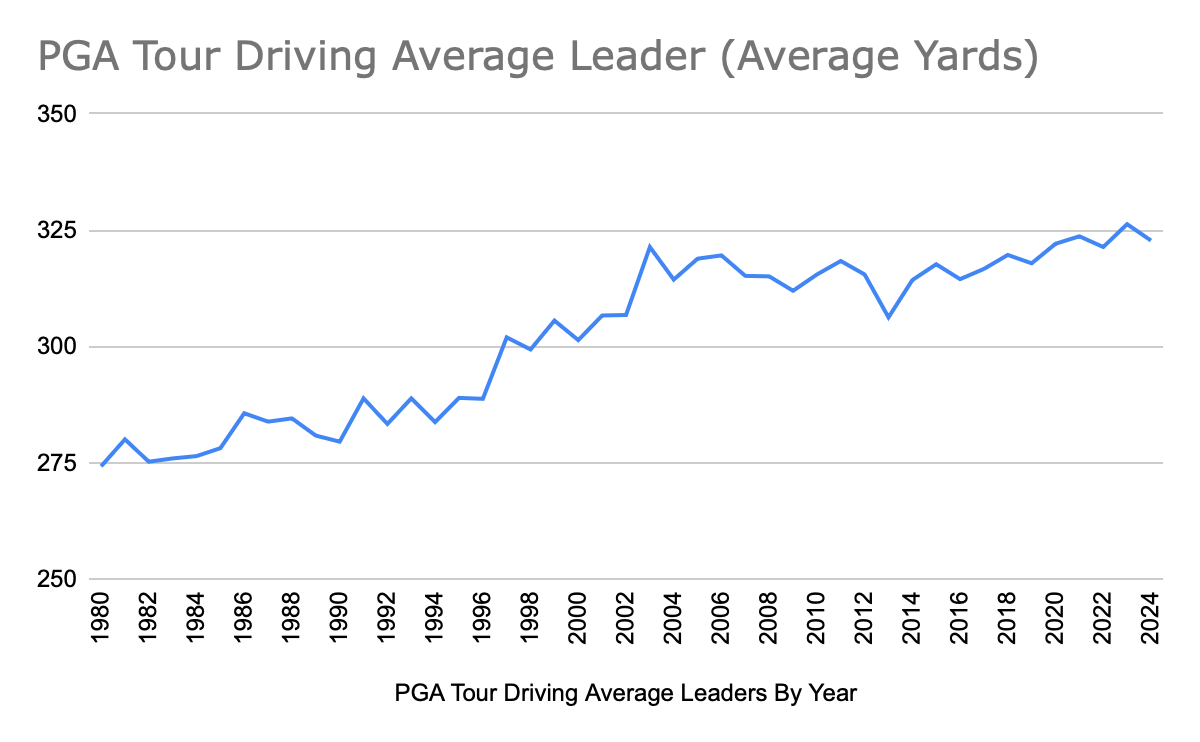Why the U.S. Open Is Great
And also why it can never be what it wants to be.
This week, the U.S. Open is being held at Oakmont, just outside of Pittsburgh. If you in any way would get golf-related content in your social algorithms, you’ve undoubtedly seen numerous videos, reels, etc., showing how deep and brutal the rough is. And how hard the greens are.
Influencers (or “creators” as they seem to prefer to be called) played the course about two weeks earlier, and almost all of them got absolutely slapped in the face by how hard the course was playing, proclaiming that nobody would break par when the tournament was held.
Of course, when play started on Thursday, we saw some cream rise to the top. Several golfers finished below par, but that doesn’t mean Oakmont didn’t buck its head and wreak havoc on a lot of truly talented golfers.
Golf is unlike most sports in that it really has FOUR main events each year rather than a World Series, NBA Finals, Super Bowl, World Cup, etc. Each major has its own personality:
The Masters - the grand traditions of Augusta, the only major that is always at the same course, etc.
The Open - Where it all started, the history of the game, the granddaddy of them all
The PGA Championship - Notable for the deepest field but also for a complete LACK of personality
The U.S. Open - The national championship, designed not to embarass the best golfers but to identify them (by being insanely tough).
Some recent US Opens have NOT been particularly difficult, with scores plunging deep under par. to the consternation of many. Oakmont desperately wants to be the standard-bearer in that regard.
Some of this rough is just a few yards off the fairway, which is absolute mania. The assumption is that the rough will be about 7” high, and THICK. We often see wispy fescue that high (or higher) in the Open, but you can at least see your golf ball.
Of course, Oakmont also has 200 bunkers, and the greens are so rock hard that if you land in the wrong place, the ball can often roll straight off the green (potentially into that rough or a bunker).
It’s a stern test, and both Oakmont and the USGA love it that way.
And yet…guys like J.J. Spaun, Thriston Lawrence and Si Woo Kim posted scores well under par in the first round. The big favorites coming in - Bryson DeChambeau, Scottie Scheffler, Rory McIlroy and Jon Rahm didn’t do as well. Rory went +5 in his last five holes to end up +4 for the day. Other guys who many had as slight sleepers like Shane Lowry and Patrick Cantlay ejected themselves out of the conversation.
It’s TOUGH. But it’s not impossible. The success of some golfers here - and there’s a LOT more golf to be played, of course - shows two things:
There’s a massive chasm between the average scratch “creator” on YouTube and even the worst pro golfer on tour. It’s a bigger gap than the gap betwen a 13 handicap (coughs loudly) and that same scratch golfer.
With the equipment and golf ball being essentially unrestricted, the forgiveness for someone as talented as a tour player will overwhelm any golf course. That’s it. Send tweet.

There’s been talk of “rollback” and all sorts of discussions about how we can’t just keep pushing tee boxes back, we can’t grow trees willy nilly to enforce accuracy (and a lot of data suggesting it’s not even useful when that does happen), etc. But it’s all been talk. The rollback that is underway will nip at the heels of progress, and probably be irrelevant within a few years.
Listen, is it fun to watch some of the best golfers in the world struggle? You bet it is. But even at Oakmont, these guys are just too good, using equipment that is increasingly tweaked to overwhelm any course. The expectations of pro golfers of how clubs should perform speaks for itself.
Pro golf asked for this - they saw how ratings and sales spiked as distance got longer and longer. There was a chance to do something years ago and we’re WELL past the time when we could have truly made a difference.
Forty years ago, the longest hitter in golf (and if you guessed it was Dan Pohl, you have a sickness and should see a doctor) averaged about 275 yards off the tee. The leader now averages literally almost 50 yards more off the tee. That’s half a football field.
The U.S. Open is the sternest test of golf, and likely always will be. But it’s never going to be what it wants to be. That’s okay! But if pro golf is upset about it, they need to look into the mirror.



